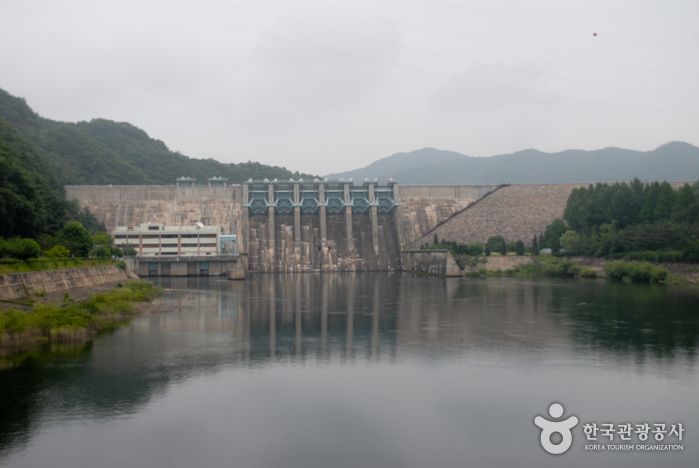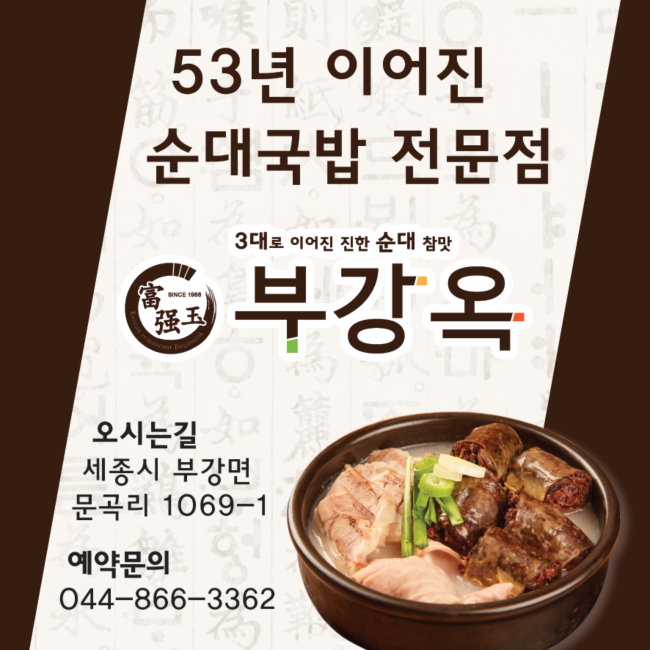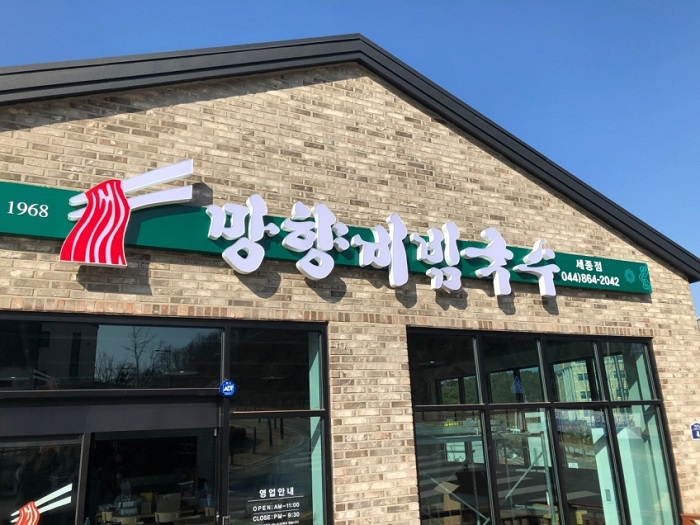Baek il heon Head House [Korea Quality] / 논산 백일헌 종택 [한국관광 품질인증]
18.1 Km 9208 2020-09-08
45, Jugok-gil, Sangwol-myeon, Nonsan-si, Chungcheongnam-do
+82-41-736-4166 / +82-10-2911-4166
The Baegilheon Head House (National Folklore Cultural Heritage No. 273) is the house that was bestowed upon General Yi Sam by King Yeongjo in recognition of his achievement in suppressing the Yi In-jwa Rebellion in 1728. King Yeongjo also granted Yi Sam the posthumous name ‘Baegilheon’. The house is composed of the munganchae (gate quarters) situated next to a tall gate, the ‘ㄷ’-shaped anchae (women’s quarters), and the ‘ㄱ’-shaped sarangchae (men’s quarters), which are configured in an overall square layout. The accommodation includes the munganchae, the araet sarang with a numaru (upper floor), and the wit sarang and the geonneotbang, each of which has a large toenmaru (a narrow wooden porch running along the outside of the building). Notably, the geonneotbang, which is connected with the daecheong (wooden floor) and has a cozy courtyard surrounded by a mud wall, was the living space for the eldest son of the family and his wife for many generations. As the house has been designated as a National Folklore Cultural Heritage, cooking in the guestrooms is strictly prohibited. However, the house provides breakfast prepared by the daughter-in-law of the head house free of charge. The toilets and shower room are situated in the back yard.
Finca Presidencial Cheongnamdae (청남대)
18.2 Km 11460 2023-04-13
Cheongnamdae-gil 646, Munui-myeon, Sangdang-gu, Cheongju-si, Chungcheongbuk-do.
Cheongnamdae es una finca presidencial que se encuentra ubicada en los alrededores de la Presa Daecheong, en Cheongju, provincia Chungcheongbuk-do. En la ceremonia de construcción de la Presa Daecheong, en el año 1980, estuvo presente el presidente Chun Doo-hwan, quien después de observar la belleza del ambiente que lo rodeaba, ordenó levantar esta finca en junio de 1983. En tan solo seis meses, en diciembre de ese mismo año, finalizó la construcción.
El nombre del lugar, Cheongnamdae, significa “el Cheong Wa Dae Sureño de las Tierras Cálidas”, y, se encuentra situado en una superficie amplia. Casi todos los presidentes del país han pasado las vacaciones en este lugar, entre 4 y 8 veces al año. Desde las épocas del presidente Rhee Seung-man ha habido un total de 4 fincas vacacionales, distribuidas en 4 regiones; pero durante la presidencia de Kim Young-sam han sido clausuradas, con excepción de Cheongnamdae. A lo largo de 20 años, esta finca ha estado cerrada al público, pero el 18 de abril del 2003, con la llegada al poder de Roh Moo-hyun, se cedió el derecho de administración a la provincia de Chungcheongbuk-do, permitiendo así el acceso al público en general.
En particular, en el centro ecológico del pantano (990 ㎡) se instaló una fuente musical, y en la senda del lago (8 km) se asentaron rutas para el montañismo y para las caminatas, de tal manera que es ideal para apreciar el paisaje espléndido del lago Daecheongho.
Presa Daecheong (대청댐)
18.5 Km 9452 2020-08-03
Daecheong-ro 618-136, Daedeok-gu, Daejeon
La presa tiene una dimensión de 72 m de altura y 495 m de longitud, está compuesta por las presas de gravedad en concreto y de piedra, presentando un estilo complejo. Se encuentra ubicada en el área de encuentro de Daejeon y la provincia Chungcheongbuk-do, hacia la cuenca baja del río Geumgang. Subiendo al observatorio (pabellón de descanso), podrá apreciar mejor la belleza del paisaje del lago Daecheongho, y, en la Sala Promocional del Agua, podrá observar variedad de materiales informativos sobre el agua. En particular, en la plaza del césped, que está asentada de manera limpia y agradable, podrá descansar libremente. En las áreas del lago, también hay variedad de restaurantes y casas de comidas regionales, que sirven el maeuntang (estofado picante de pescado) y el jangeogui (anguila condimentada a la parrilla), entre otros.
Bugangok (부강옥)
18.6 Km 24 2021-03-24
103, Bugangoecheon-ro, Sejong-si
+82-10-9577-8953
It is a restaurant that’s featured a lot in various media. This Korean restaurant is located in Sejong-si. The representative menu is blood sausage and rice soup.
Manghyang Bibimguksu - Sejong Branch (망향비빔국수 세종)
18.7 Km 124 2021-03-20
4, Bareun, 7-gil, Sejong-si
+82-44-864-2042
As a representative restaurant of locals, it is a place where you can eat Korean-style noodles. The best menu at this restaurant is spicy noodles. This Korean dishes restaurant is located in Sejong-si.
Observatorio de la Presa Daecheong (대청댐 전망대)
19.0 Km 0 2023-03-21
Daecheonghoban-ro 206, Munui-myeon, Sangdang-gu, Cheongju-si, Chungcheongbuk-do
Myeongrjaegotaek [Korea Quality] / 논산 명재고택 [한국관광 품질인증]
19.6 Km 10549 2023-04-13
50, Noseongsanseong-gil, Noseong-myeon, Nonsan-si, Chungcheongnam-do
+82-41-735-1215, +82-10-6310-1139
Located in Noseong-myeon, Nonsan-si, Chungcheongnam-do, Myeongjae Historic House was built by Yun Jeung (pen-name: Myeongjae, 1629-1714), a scholar during the reign of King Sukjong (r. 1674-1720) of the Joseon Dynasty. It is said that although the king granted him a government post on eighteen occasions, Yun, being a straightforward sort of person, declined them all. As he practiced the virtue of simplicity and sharing in life and taught it to younger generations, the house escaped destruction during the Donghak Peasant Revolution (1894) and the Korean War (1950-1953) thanks to the efforts of his disciples. Thus, in keeping with his character, the house looks moderate compared to the homes of other aristocrats, although it exhibits a refined interior and a scientific design. The house consists of a sarangchae (men’s quarters), anchae (women’s quarters), and daecheongmaru (main floored room) configured in a square layout. The sarangchae itself consists of the keun sarangbang (large room) flanked by a daecheong and a numaru with an open view of the village and a mountain, the jakeun sarangbang (small room), the ansarangbang (inner room), and the daemungan (gate). To the right of the house is the spectacular sight created by a platform filled with hundreds of crocks for traditional sauces and condiments. The wall situated between the sarangchae and the anchae was designed to prevent people from looking into the anchae. There is also an open space below the wall from which one could see the shoes of a visitor, thus enabling the occupants of the anchae to know whether there was a visitor or not in the sarangchae. In addition, the gotganchae (storage quarters) situated next to the anchae is designed in such a way that it diminishes in size towards the north because the summer wind blowing from the south escapes the narrow passageway of the north, so it blows faster and the surrounding area gets colder, while the wind winter blowing from the north escapes the large passageway of the south, protecting the building from the bitter wind of the north. Therefore, the storeroom at the north end of the gotganchae remains cool even in summer, thereby preserving the things (food and other commodities) stored there. The guestrooms of the house include the three sarangbang rooms in the sarangchae building and the geonneonbang (a room opposite the main living room) in the anchae. The entire sarangchae building including the numaru can be rented too. Guests can also rent the thatched-roof byeolchae in the courtyard, which features a choyeondang equipped with a sound system and a beam projector, as well as a modern bathroom, for group meetings or performances. The house also runs a variety of paid traditional experience programs including Gukak (Korean classical music), tea ceremony, natural dyeing, and so on. Other noteworthy features of the house include the sarangchae’s distinctive gate, which combines a sliding door with a hinged door, the looming presence of a mountain to its rear, and the little round island (pond) planted with an old crape myrtle at its front.
![Baek il heon Head House [Korea Quality] / 논산 백일헌 종택 [한국관광 품질인증]](http://tong.visitkorea.or.kr/cms/resource/98/2530098_image2_1.jpg)




![Myeongrjaegotaek [Korea Quality] / 논산 명재고택 [한국관광 품질인증]](http://tong.visitkorea.or.kr/cms/resource/40/1878940_image2_1.jpg)
 Español
Español
 한국어
한국어 English
English 日本語
日本語 中文(简体)
中文(简体) Deutsch
Deutsch Français
Français Русский
Русский